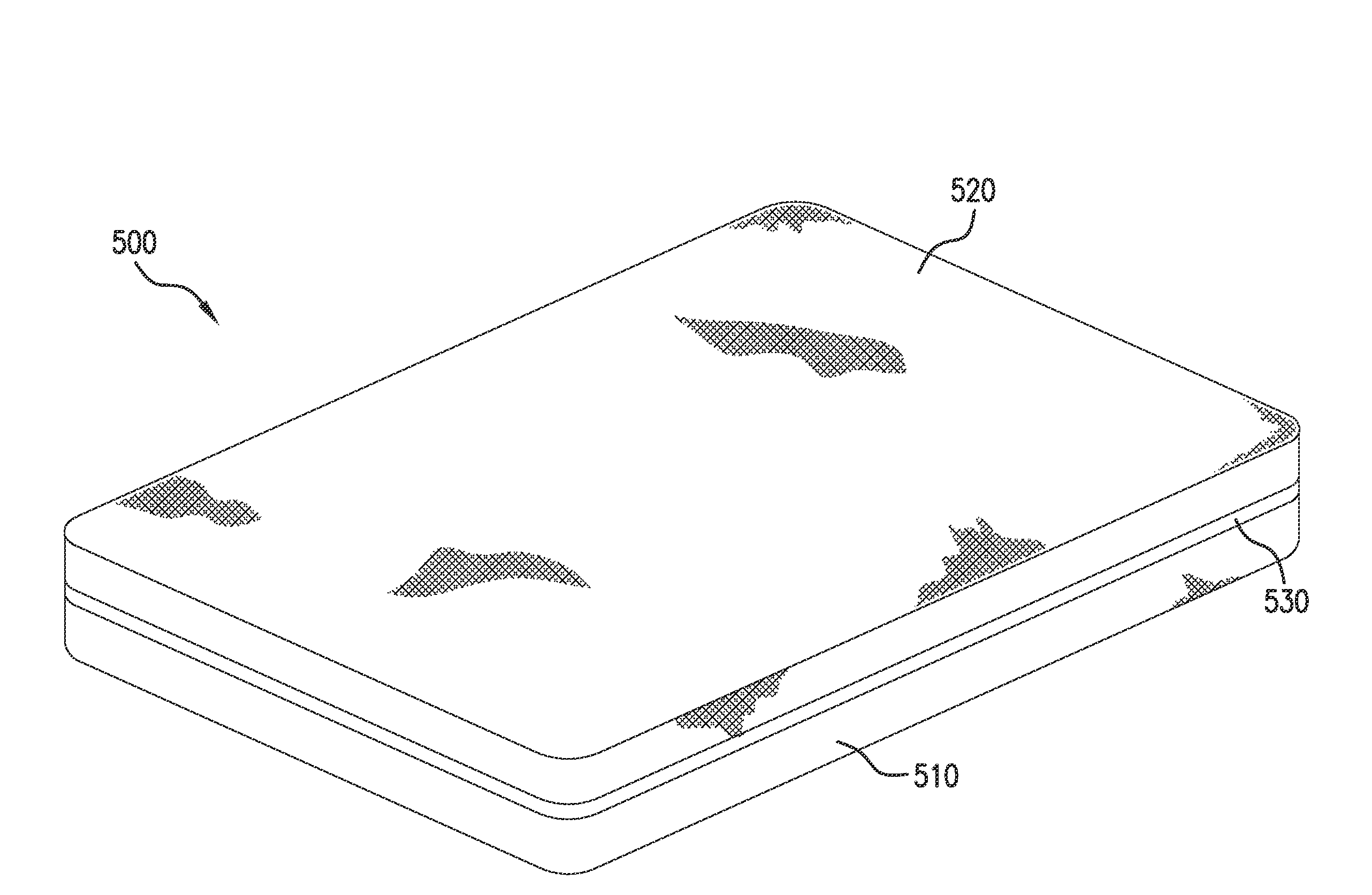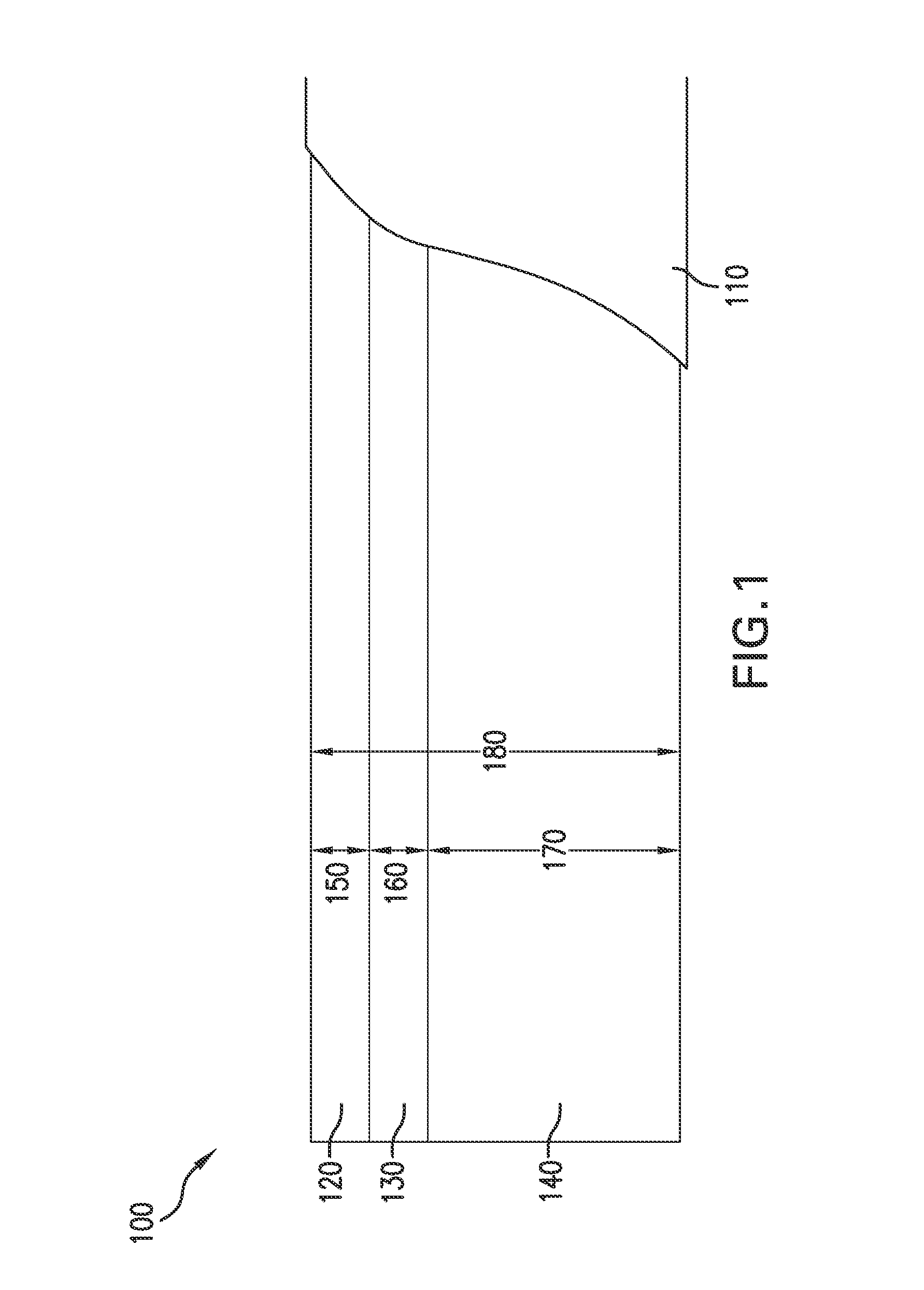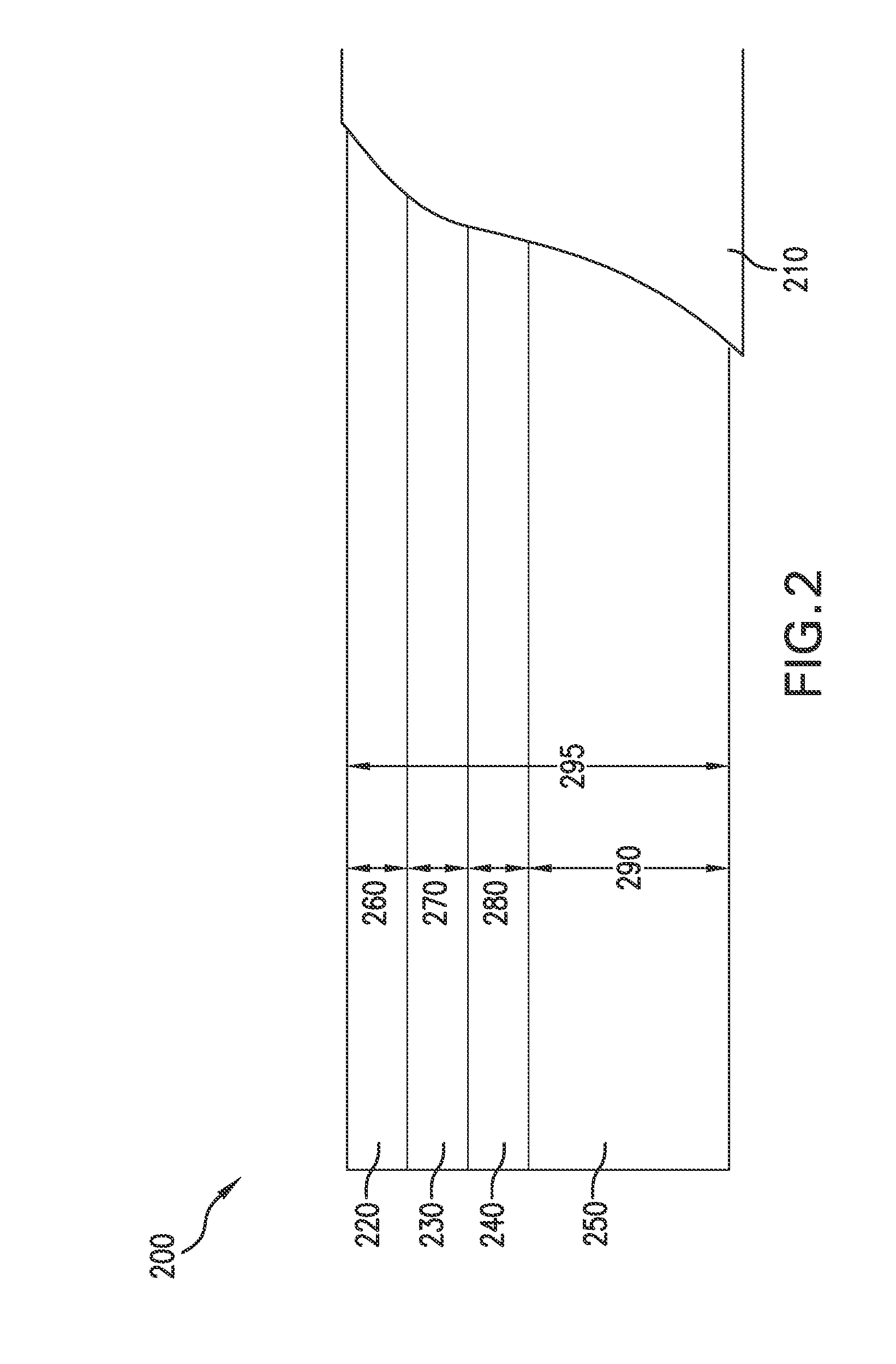Mattress
a foam mattress and mattress technology, applied in the field of foam mattresses, can solve the problems of high average return rate of foam mattresses, and high cost of latex and memory foam
- Summary
- Abstract
- Description
- Claims
- Application Information
AI Technical Summary
Benefits of technology
Problems solved by technology
Method used
Image
Examples
first embodiment
A. First Embodiment
[0031]In a first embodiment, the total depth 180 of the mattress 100 may be 9.5 inches. The first layer depth 150 of the mattress 100 may be 1.5 inches. The second layer depth 160 of the mattress may be 1.5 inches. The third layer depth 170 of the mattress may be 6.5 inches.
[0032]In this first embodiment, the first layer 120 is a layer of latex foam. The first layer 120 may consist of C1 latex from Mountain Top Foam and may have the physical properties shown in Table 1.
TABLE 1PotentialTargetToleranceUnitTest MethodRangeUnitDensity3.3±0.2pcfn / a2 to 4 pcf25% IFD12±1lbASTM D3574-11 Test B16 to 18lbAirflow>4minimumcfmASTM D3574-11 Test G>2cfmRecoverymaximumsecondsASTM D3574-11 Test MsecondsRebound65±5%ASTM D3574-11 Test H>40%Support3±0.1n / aASTM D3574-11 Test B1>2n / aFactorTgn / a
[0033]In Table 1, the rightmost two columns demonstrate potential ranges of physical properties related to the first layer 120.
[0034]The second layer 130 is a layer of memory foam. The second lay...
second embodiment
B. The Second Embodiment
[0043]In a second embodiment, the total depth 180 of the mattress 100 may range from 1 to 22 inches. The first layer depth 150 of the mattress 100 may range from 0.25 to 5 inches. The second layer depth 160 of the mattress may range from 0.25 inches to 5 inches. The third layer depth 170 of the mattress may range from 0.5 to 12 inches.
[0044]The second embodiment is similar to the first embodiment in that the first layer 120 is latex or latex-like foam and the second layer 130 is memory foam. The third layer 140 may be any of the following: i) latex foam; ii) latex-like foam; iii) polyurethane visco-elastic “memory” foam; iv) conventional polyurethane foam; v) HR (high resilience) polyurethane foam; or vi) any other polyurethane, polyethylene or polyester Foam.
IV. The Four-Layer Mattress
[0045]Turing to FIG. 2, shown is cross-section of a four-layer mattress 200 with a cover 210. The cross-section of the depth of the mattress 200 includes a first layer 220, a s...
PUM
 Login to View More
Login to View More Abstract
Description
Claims
Application Information
 Login to View More
Login to View More - R&D
- Intellectual Property
- Life Sciences
- Materials
- Tech Scout
- Unparalleled Data Quality
- Higher Quality Content
- 60% Fewer Hallucinations
Browse by: Latest US Patents, China's latest patents, Technical Efficacy Thesaurus, Application Domain, Technology Topic, Popular Technical Reports.
© 2025 PatSnap. All rights reserved.Legal|Privacy policy|Modern Slavery Act Transparency Statement|Sitemap|About US| Contact US: help@patsnap.com



